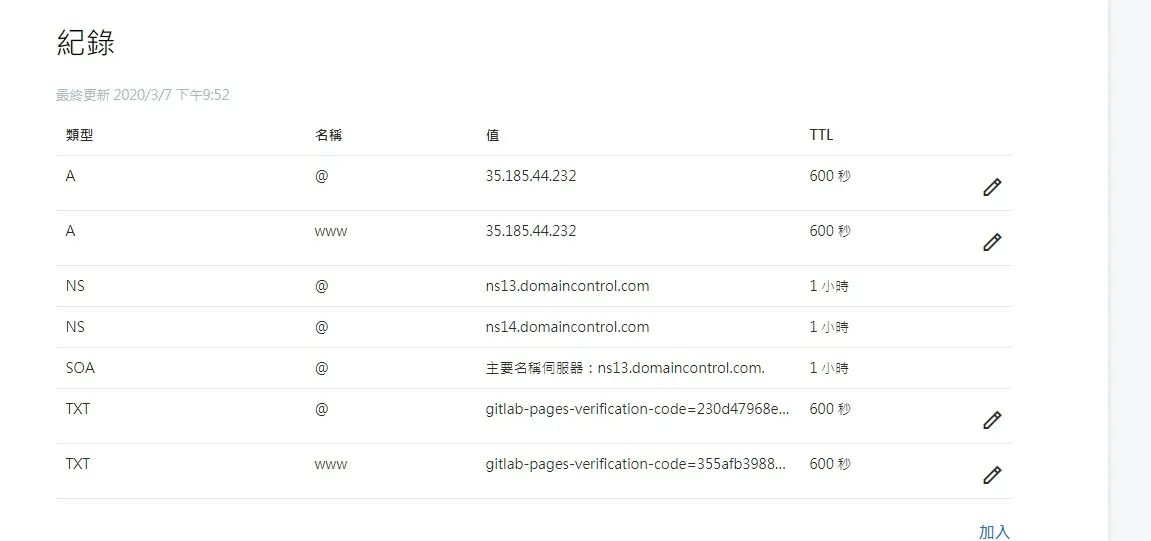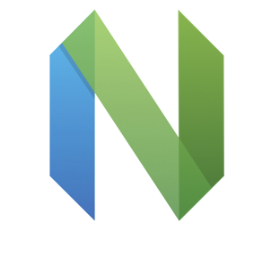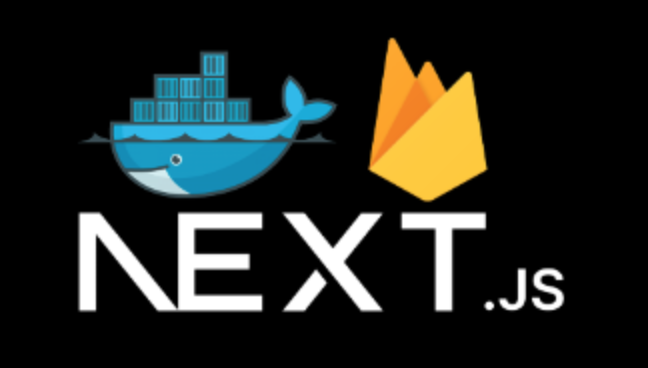Set godaddy domain and build hugo on gitlab pages
The idea comes from…
I read a blog 將 Github Page 串上自己的域名 on Medium.com, and I thought about my bad experience in setting gitlab pages. I think I have to write a blog now, and let me remember how to set it again.
Hugo
First, install go and hugo:
My system is Ubuntu 19.04, so I follow Go wiki instructions.
sudo add-apt-repository ppa:longsleep/golang-backports
sudo apt update
sudo apt install golang-goThese commands will install latest Go. Then, let’s install hugo following hugo:
snap install hugo --channel=extendedNow, test it:  Okay, system requirements are prepared.
Okay, system requirements are prepared.
We can use hugo new site SITE_NAME to initialize a site, hugo server -D to see you page.
Gitlab pages
Open a public repository. (You will have earth icon.) 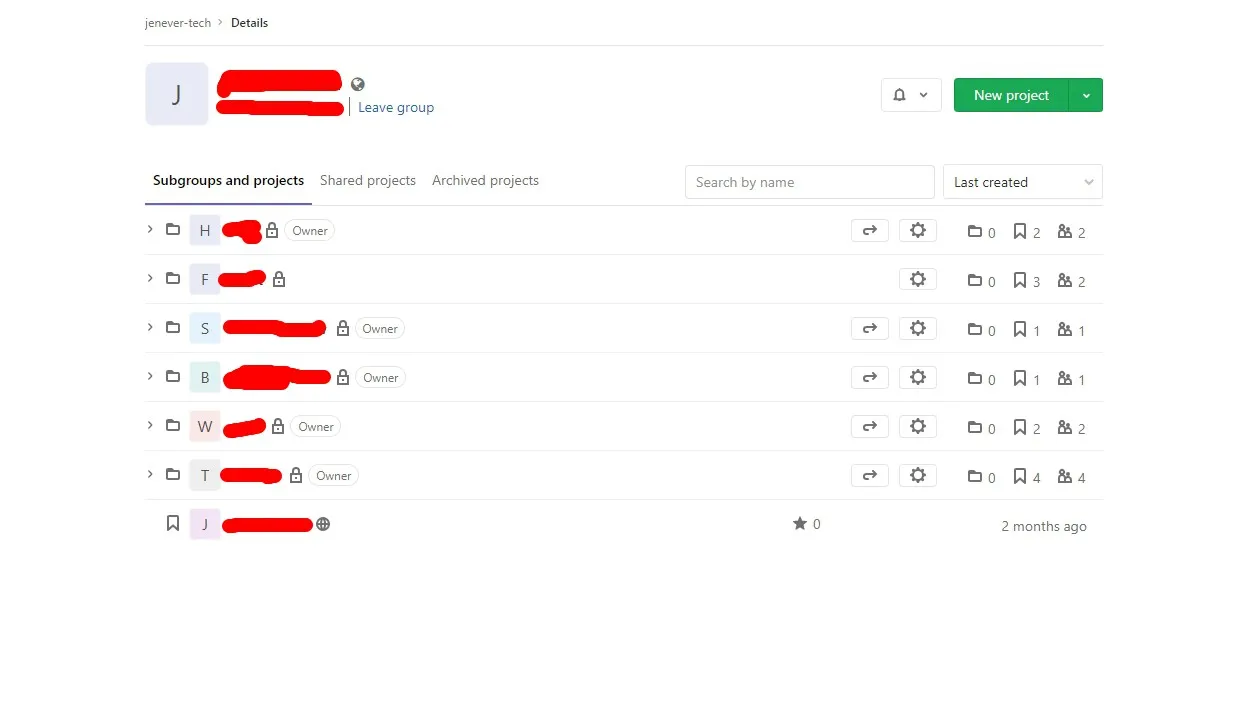
Then, add a gitlab-ci yml file to run CI/CD on gitlab
image: registry.gitlab.com/pages/hugo:latest
variables:
GIT_SUBMODULE_STRATEGY: recursive
test:
script:
- hugo
except:
- master
pages:
script:
- hugo --gc
artifacts:
paths:
- public
expire_in: 1 day
only:
- masterFinish! add, commit, and push it!
Check your CI/CD pipeline is passed
The last step on Gitlab is to set pages domain. Go to Settings > Pages > New Domain add your domain. 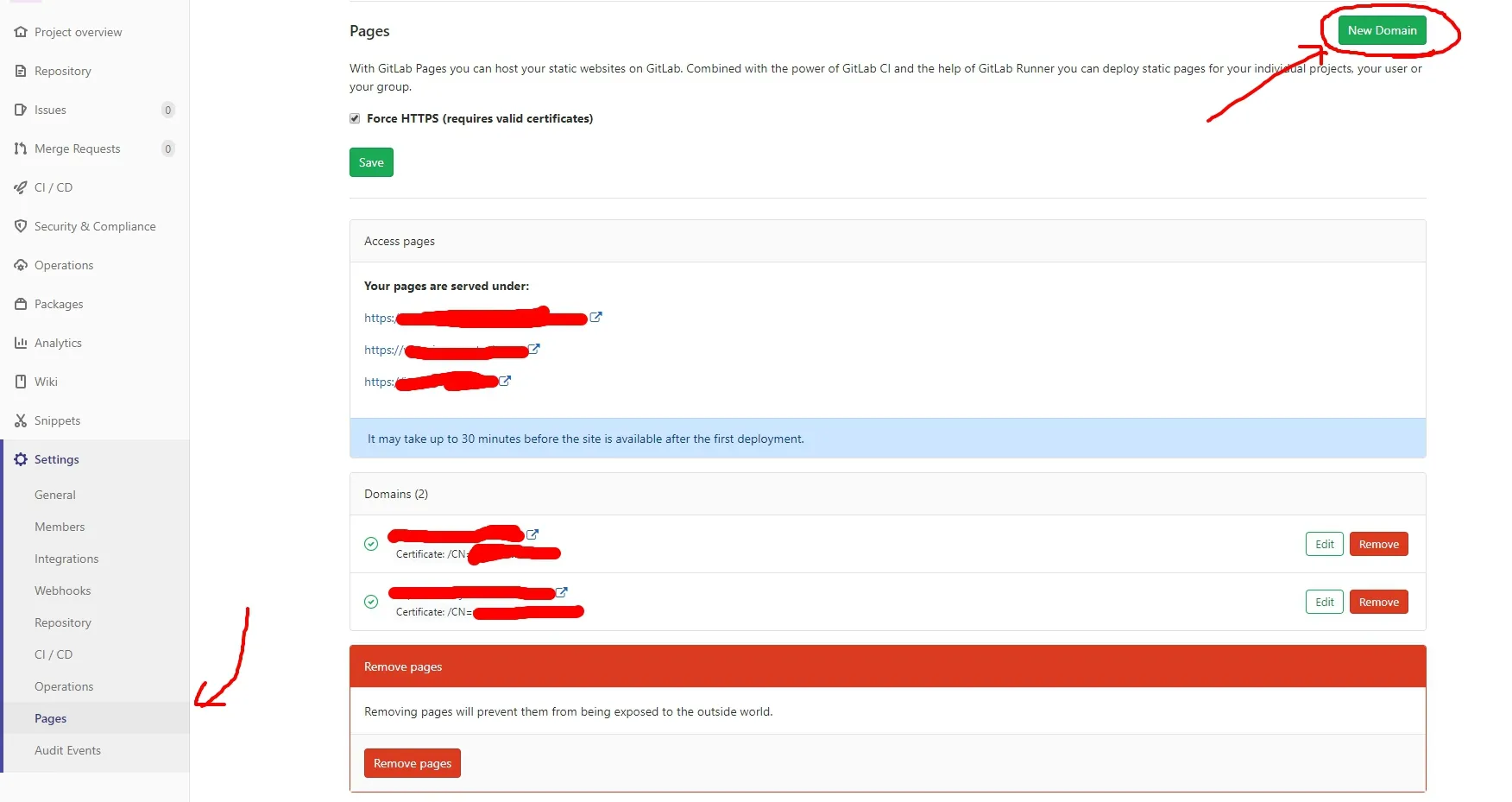
You will get a CNAME and a TXT settings to set in your godaddy. 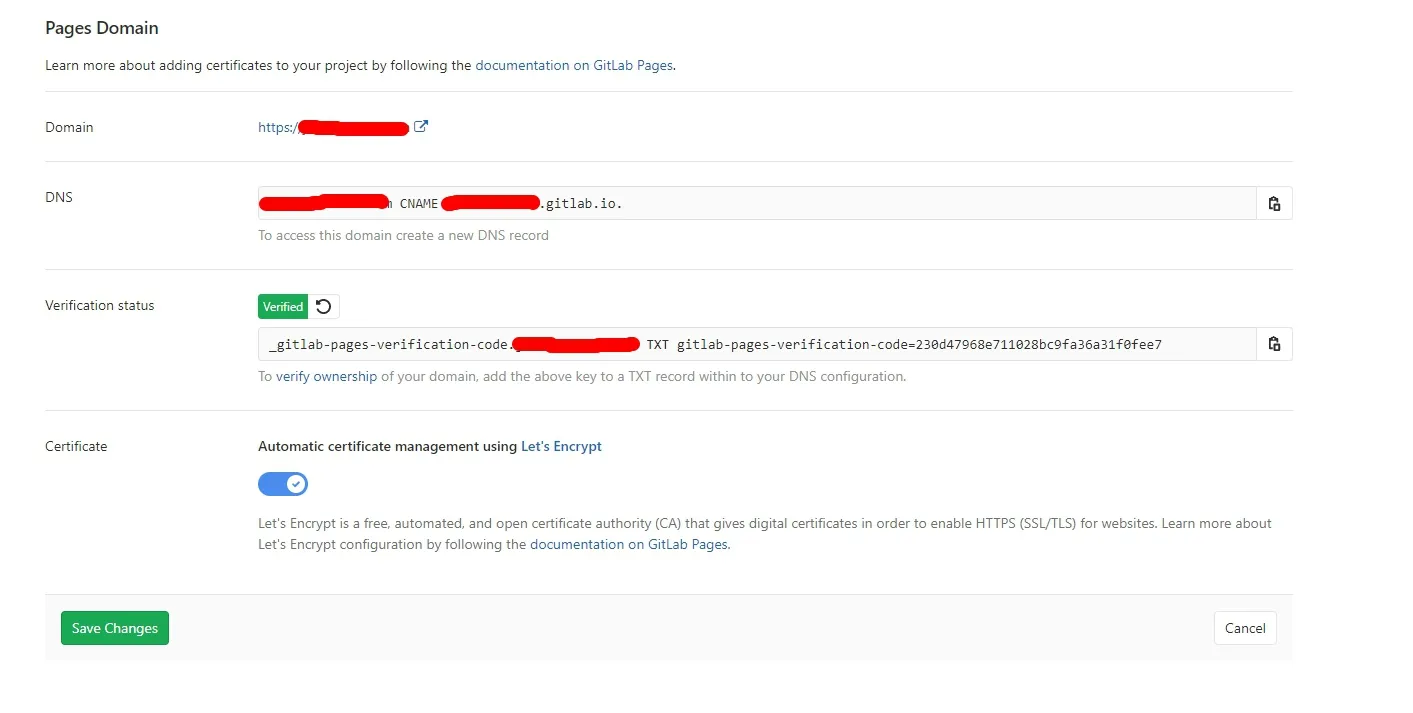
But the setting is tricky. Let’s see my Godaddy.
Finally, Godaddy settings
I set two A records point to 35.185.44.232, two TXT records corresponding to A and its TXT value. Note that TXT keys are only @ and www. I’ve tried many settings, and only these settings are workable. Alternatively, you can use Cloudflare with the whole keys and values that gitlab provided.
That’s all. Go back to Gitlab pages setting to verify your domain, and then open your website in the browser.
Summary
I use A record instead of CNAME, and set @ and www as TXT records’ key. Otherwise, I can’t verify my domain. There are many setting tutorial on the Internet. Just find and try it!
